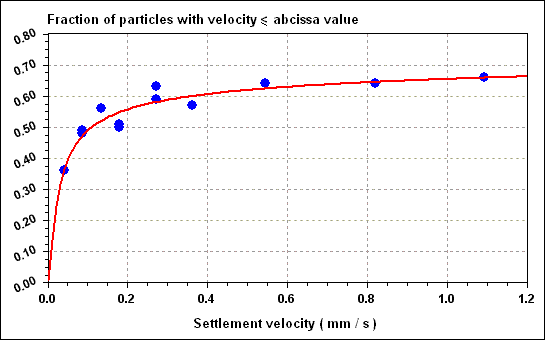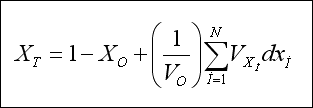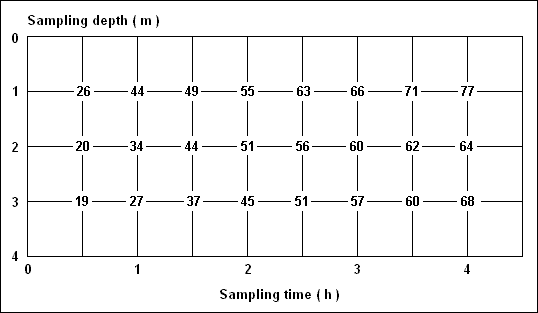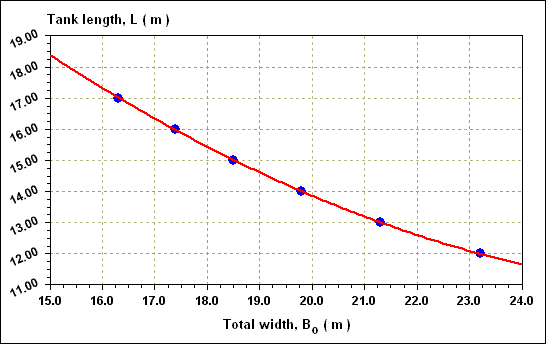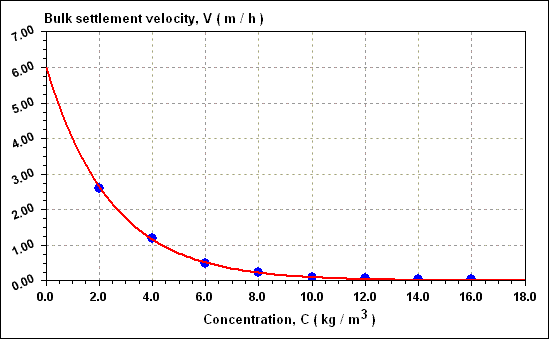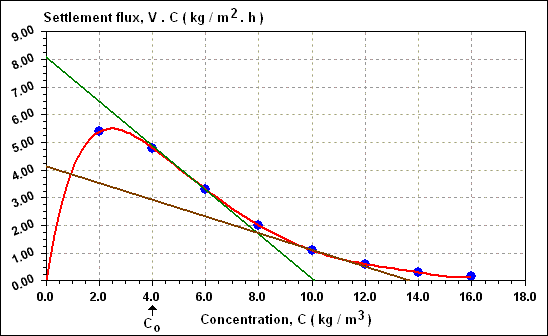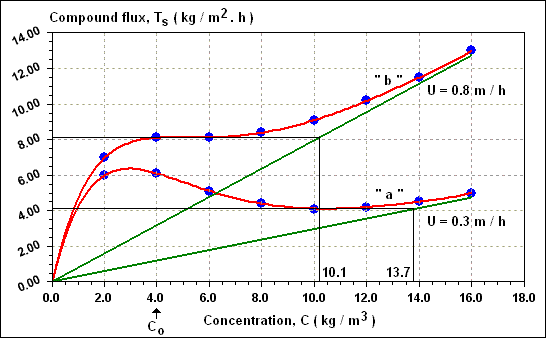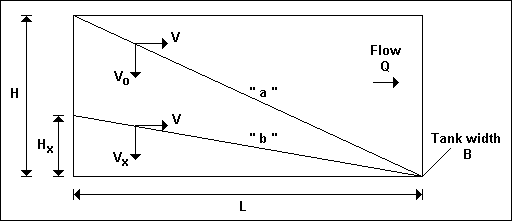
Q = ( V ) ( B ) ( H )
where ; Q : forward flow through the tank, H : depth, B : width and V : mean forward velocity assumed to be constant at all points in the the tank. By geometry ;
( V / V O ) = ( L / H )
V O = ( Q ) / [ ( L ) ( B ) ]
This settlement velocity is referred to as the design settlement velocity of the tank and can be used to predict settlement efficiencies within the tank. This velocity is also known as the surface loading rate or overflow rate of the tank.
Example 3-1 :
A flow of 20 L / s of a mixed suspension of discrete particles of relative density ( specific gravity ) of 2.60 is to be settled in an ideal settlement tank having a surface area of 5.00 m 2 . Assuming NU = 1.00 x 10 - 6 m 2 / s, calculate the diameter of particles, 100 % of which will be settled. Also, determine the effect of halving the depth.
Calculation :
V O = ( Q ) / [ ( L ) ( B ) ] = ( 20 x 10 - 3 ) / ( 5.00 ) = 4.00 x 10 - 3 m / s
d = { [ ( V O ) ( 18 NU ) ] / [ ( g ) ( R D - 1 ) ] } 1 / 2
d = { [ ( 4.00 x 10 - 3 ) ( 18 x 1.00 x 10 - 6 ) ] / [ ( 9.81 ) ( 2.60 - 1 ) ] } 1 / 2 = 6.8 x 10 - 5 m = 0.068 mm
Particles with relative densities of 2.60 with diameters than 0.068 mm will settle completely, some smaller particles will pass through the tank. If the depth is halved, the forward velocity V is doubled. However the particles have only half the original vertical distance to fall. Thus ;
( 2 V / V O ) = [ ( L ) / ( H / 2 ) ]
( V / V O ) = ( L / H )
Therefore, changing the depth has no effect unless extreme conditions of shear are produced, i.e. the tank ceases to be an ideal tank. Line " b " represents the path taken by a particle with settlement velocity V X which enters the tank at height H X in a homogeneous column of suspension of depth H. If it settles out in a tank of design settlement velocity V O , then by geometry ;
( H X / L ) = ( V X / V )
Substituting for V = ( L / H ) ( V O )
( H X / H ) = ( V X / V O )
Example 3-2 :
For the conditions given in Example 3-1, determine the propotion of particles with R D = 2.60 and diameter 0.04 mm which settle in the basin.
Calculation :
V X = [ ( g ) ( d 2 ) ( R D - 1 ) ] / ( 18 NU )
V X = [ ( 9.81 ) ( 4.00 x 10 - 5 ) 2 ) ( 2.60 - 1 ) ] / ( 18 x 1.00 x 10 - 6 ) = 0.0014 m / s
Therefore the proportion settling is ;
( V X / V O ) = ( 1.40 x 10 - 3 / 4.00 x 10 - 3 ) = 0.35 = 35 %

